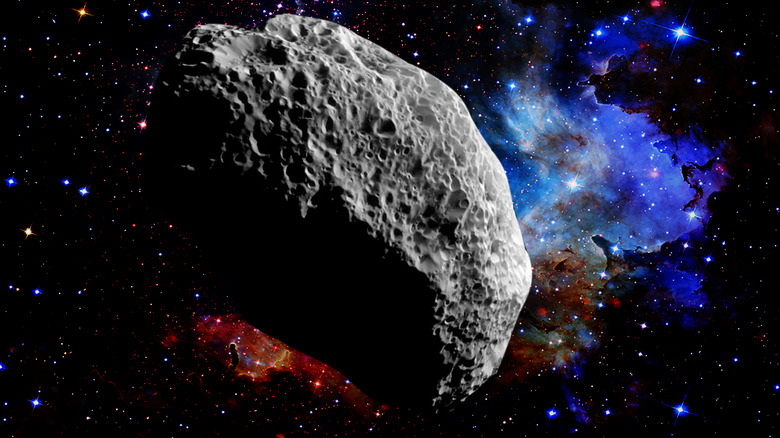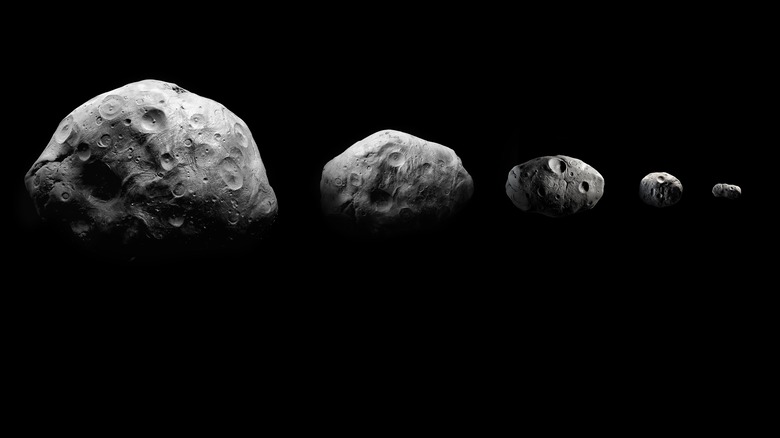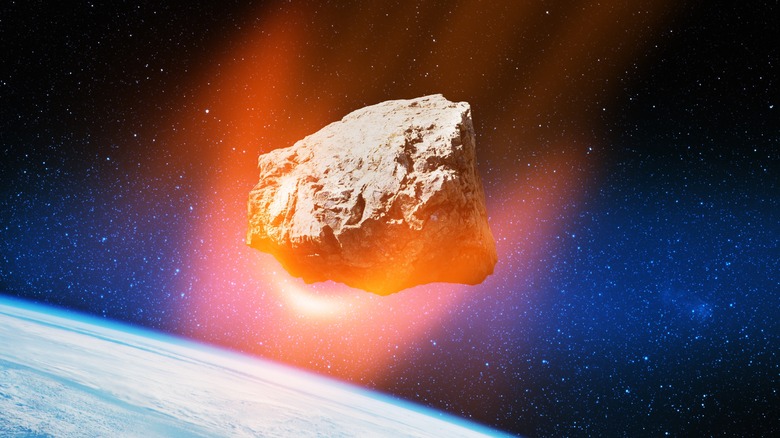What We Know About The Skyscraper-Sized Asteroid 2022 KY4
On Sunday, July 17, a skyscraper-sized asteroid, some 50 stories tall, passed near the Earth. An Earth-asteroid collision of that magnitude could be catastrophic for all life on our planet, as dinosaurs would surely tell us if only they were still around (and if they could talk), according to NPR reporting. Here's what is known about our planet's visitor, referred to as Asteroid 2022 KY4, and how close the asteroid came to hitting us, based on data from NASA.
In cases like Asteroid 2022 KY4, NASA and other space agencies closely monitor the flight path of such objects using "Sentry: Earth Impact Monitoring," among other systems (via the Center for Near Earth Object Studies). But even if the orbit of an asteroid is not expected to intersect with Earth's orbit, gravitational pull from large objects could quickly change that. Prime suspects for such a thing happening include the planet Jupiter or even Mars (per NASA Science).
Asteroid 2022 KY4 has flown by us before
As NASA goes on to explain in their data, the July 17 encounter with Asteroid 2022 KY4 is not the first time that this giant space rock has flown near the Earth. In addition to being some 50 stories tall — that's anywhere from 450 to 700 feet in height, as Measuring Stuff notes — the giant space boulder is also roughly 290 feet, or 88 meters, at its widest point. And as Asteroid 2022 KY4 barreled near us, it traveled at nearly 17,000 mph. Some 27,000 near-Earth KY4-like asteroids have so far been identified, as Space.com explains.
Also according to NASA, this particular asteroid last came this close to Earth in the 1940s and '50s. And the next time we should expect a visit from KY4 is in 2048, and again in 2051. The 2022 encounter was KY4's nearest visit in about a century, according to Colorado news outlet KDVR. The orbits of such objects are closely tracked so as to predict a catastrophic Earth collision, and should that happen, there are contingency plans in place, such as the Double Asteroid Redirection Test (DART), launched in fall 2021 to try and knock the asteroid Didymos off its path (via Planetary).
KY4 missed the Earth by 3.8 million miles
Though the 2022 visit from KY4 was the closest in a century, it safely breezed by our planet at a distance of about 3.8 million miles away, as KDVR goes on to report. Though that's a safe distance, KY4 still fits NASA's definition of potentially hazardous, given how close it was expected to come and just how big KY4 truly is (via NASA). Also based on NASA estimates, there's no known threat from asteroid impact on Earth, but that could change without warning, so NASA scientists must stay vigilant.
The largest near asteroid encounter we've had in recent history was 3122 Florence, measuring an estimated 2.5 miles to 5.5 miles wide, according to Florida news outlet WPBF. For scale, the asteroid impact which contributed to the extinction of the dinosaurs was an estimated six miles across and created a crater upon impact of about 110 feet miles in diameter, as the Planetary Science Institute explains.


